- Administration
- Credentials
- Manage credentials for users in your organization
Manage credentials for users in your organization
Learn how to manage credentials for users in your organization via the web app.What are credentials?
The Credentials feature in SafetyCulture simplifies and streamlines the management of your workforce's qualifications. Whether it's certifications or external qualifications, like driver's licenses and first aid courses, our platform offers a single, organized repository for them all.
You can manage your own credentials or those of your workforce by categorizing them into different credential types. You can add new versions of credentials that are about to expire, view their approval status, and review their history. You can also track each version's activity, which logs the changes made on the issue date, expiration date, and media attachments.
Pairing with Training in SafetyCulture, Credentials ensures your teams have complete compliance. For example, a forklift operator can take a site induction course and have a forklift license as a credential for seamless on-site operations.
Users can customize their notification settings to be notified when their credential is about to expire.
Please note that you need to have "Platform management: Users" permission to manage another user's credentials from the list of users in your organization.
Add a user’s credential
Click your organization name on the lower-left corner of the page and select Users.
Select a user.
Click
Add credential on the right-hand side of the page.
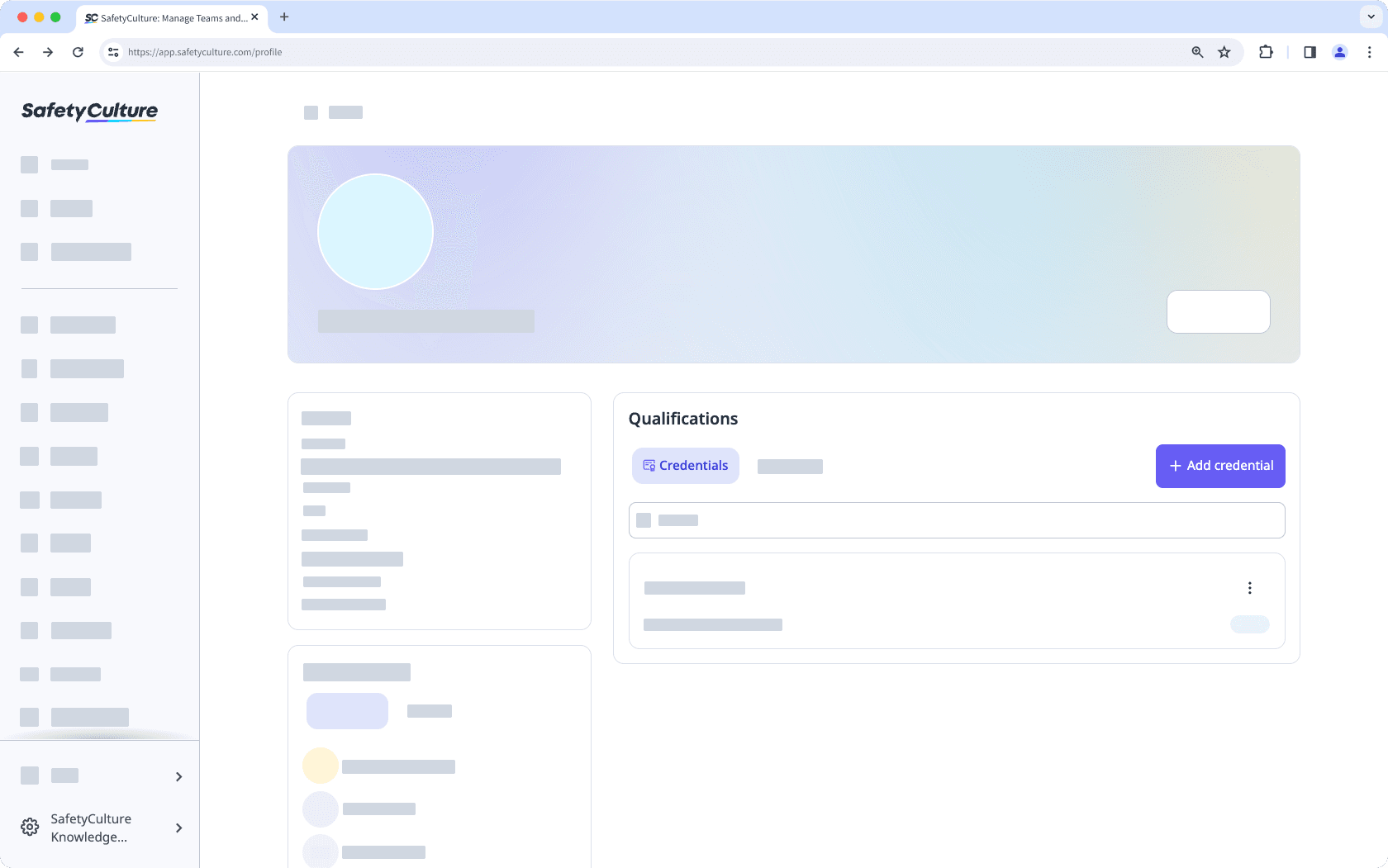
Upload photos or PDF files of the user’s credential.
Enter the following required credential details:
Credential type: The type of a credential. For example, "Driver's license".
User: The user a credential is associated with.
Issue date: The issue date of a credential.
Expiration date: The expiration date of a credential.
Click Save.
Edit a user’s credential
Click your organization name on the lower-left corner of the page and select Users.
Select a user.
Click
on the credential's right-hand side.
Select
Add version or
Edit latest version to create a new credential or update an existing one.
Update the credential accordingly.
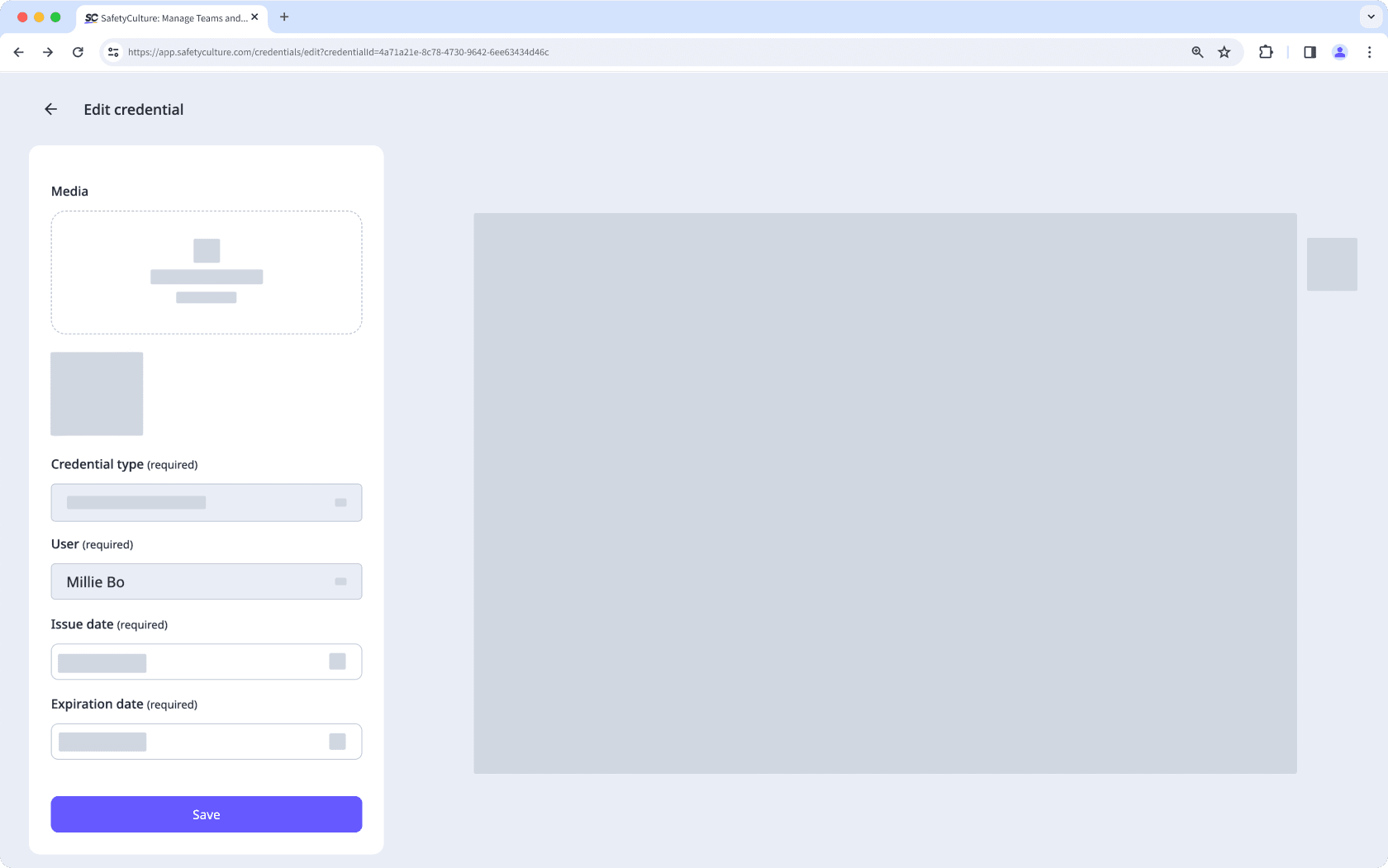
Click Save.
View a user's credential history
Click your organization name on the lower-left corner of the page and select Users.
Select a user.
Click
on the credential's right-hand side, and select
View history.
On this page, you can view all versions of the credential and select any of the versions to view more details.

View a user’s credential version’s activity
Click your organization name on the lower-left corner of the page and select Users.
Select a user.
Select a credential.
Click Activity from the tab on the left-hand side of the page.
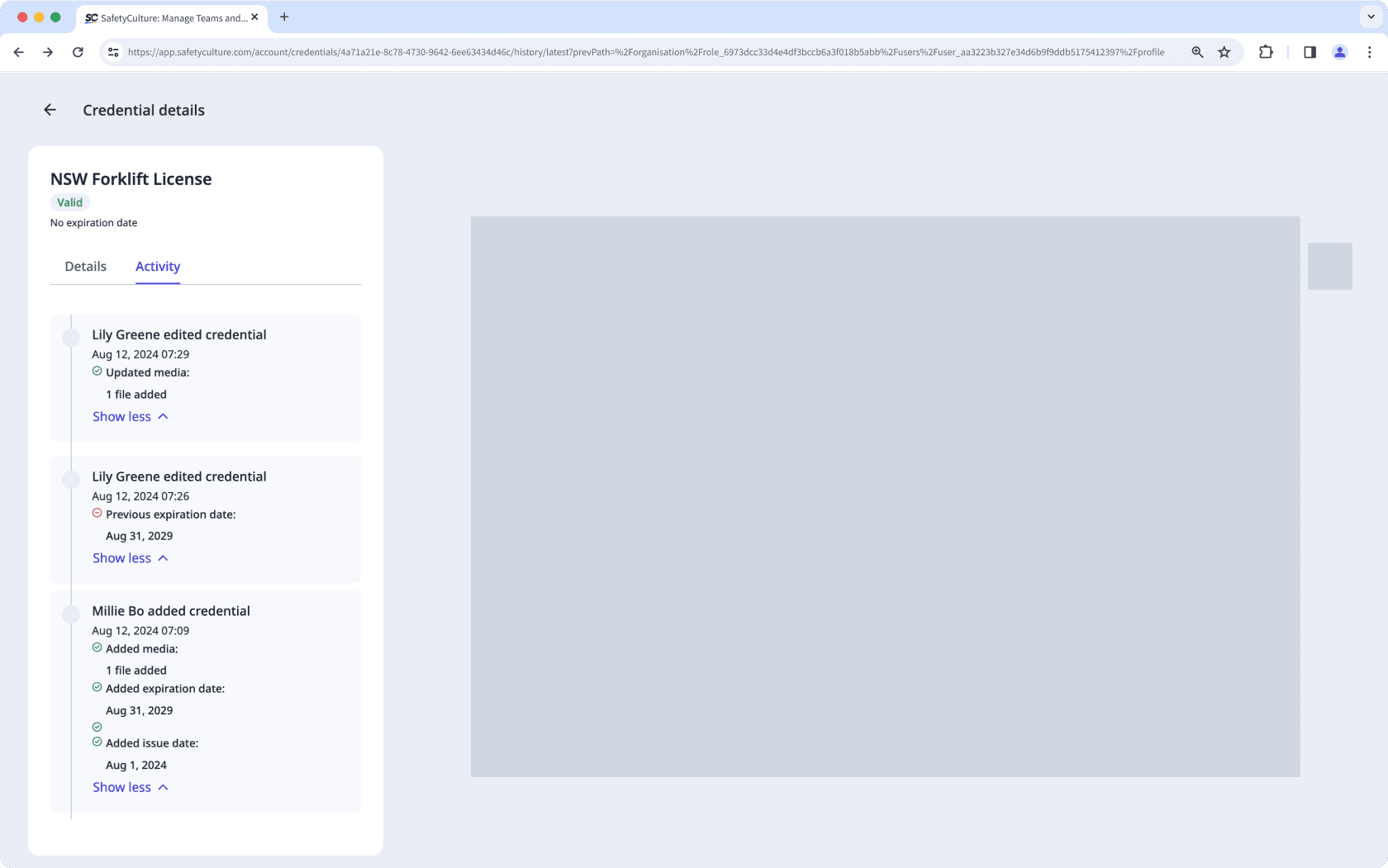
In this tab, you can view changes made to the following fields of the user's credential over time:
Issue date
Expiration date
Media files
View a user's credential approval status
Click your organization name on the lower-left corner of the page and select Users.
Select or search for the user to view their credentials.
View the approval status on the lower-right of the credential.
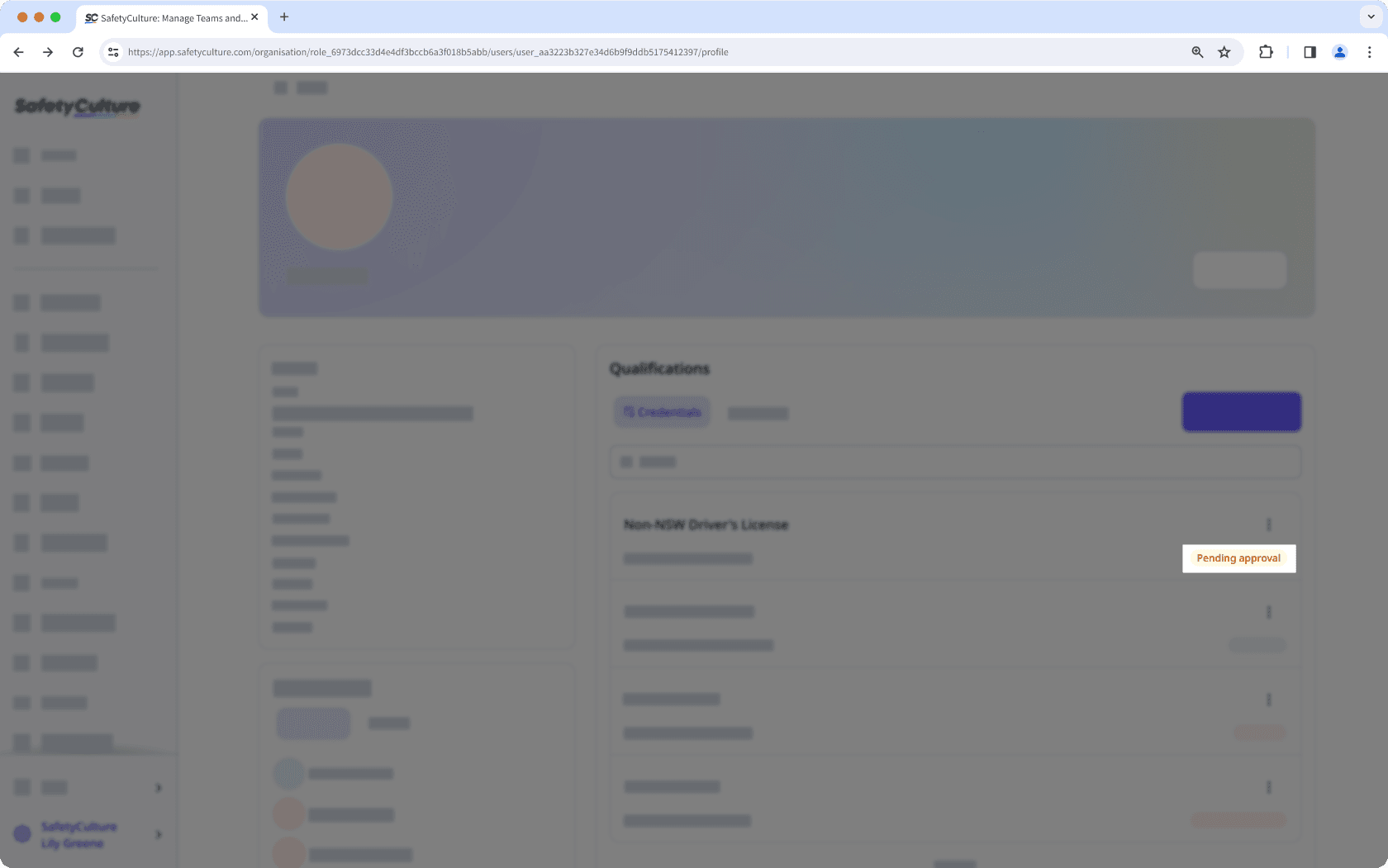
Deleting is irreversible, and we cannot restore permanently deleted items. Confirmation is always required before any deletion, so be sure you're not accidentally deleting the wrong item.
Delete a user’s credential
Click your organization name on the lower-left corner of the page and select Users.
Select a user.
Click
on the credential's right-hand side, and select
Delete.
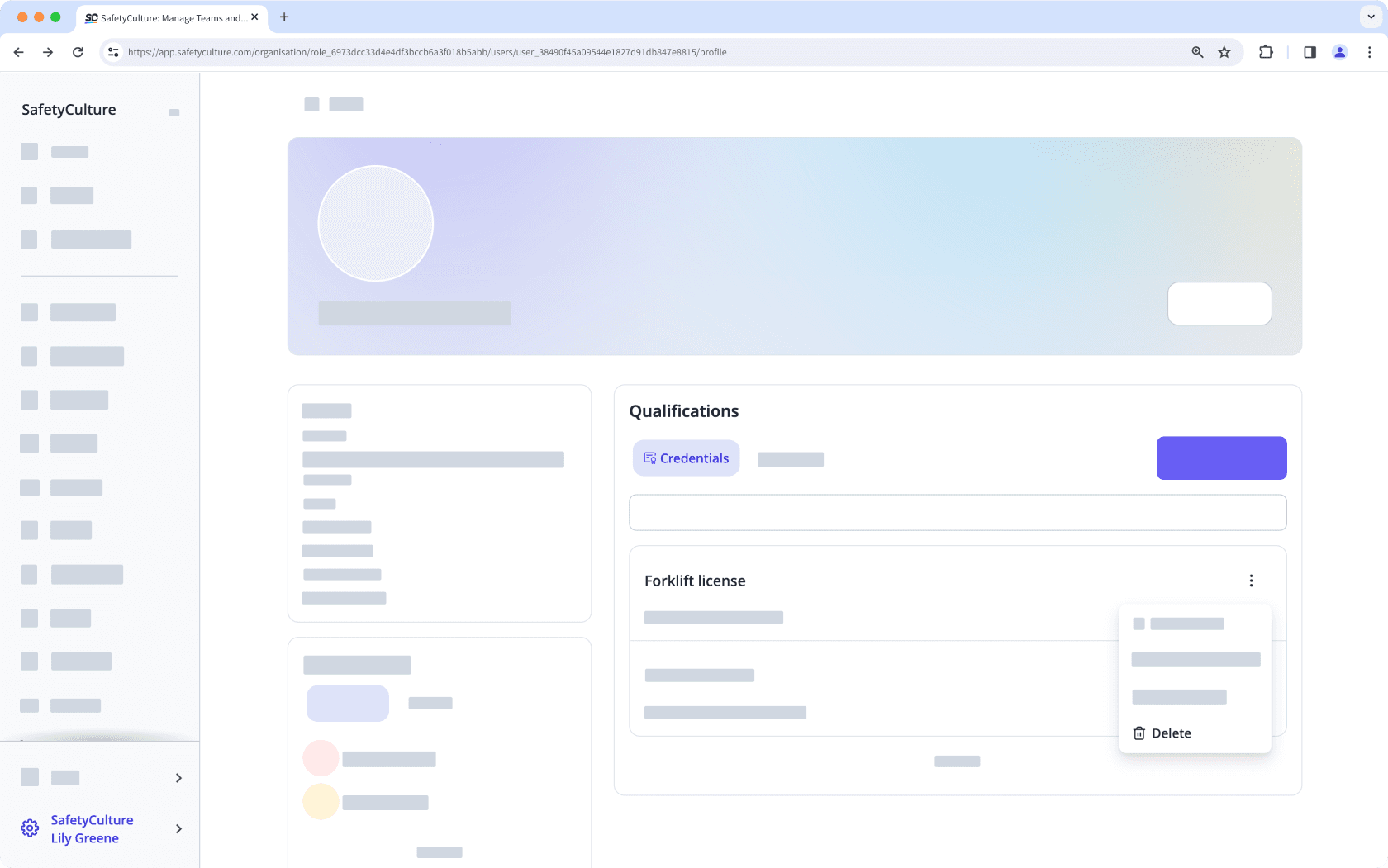
In the pop-up window, click Delete.
Bulk uploading credentials is only available to users with "Platform management: Credentials" permission.
You can only bulk upload up to 20,000 credentials at a time.
Bulk upload credentials
Click your organization name on the lower-left corner of the page and select Credentials.
Click
on the upper-right of the page and select
Bulk upload (CSV).
Click Download CSV template on the upper-right of the page.
Open the CSV template and follow the instructions to add your credentials.
Once you're ready, your CSV should look something like the following example:
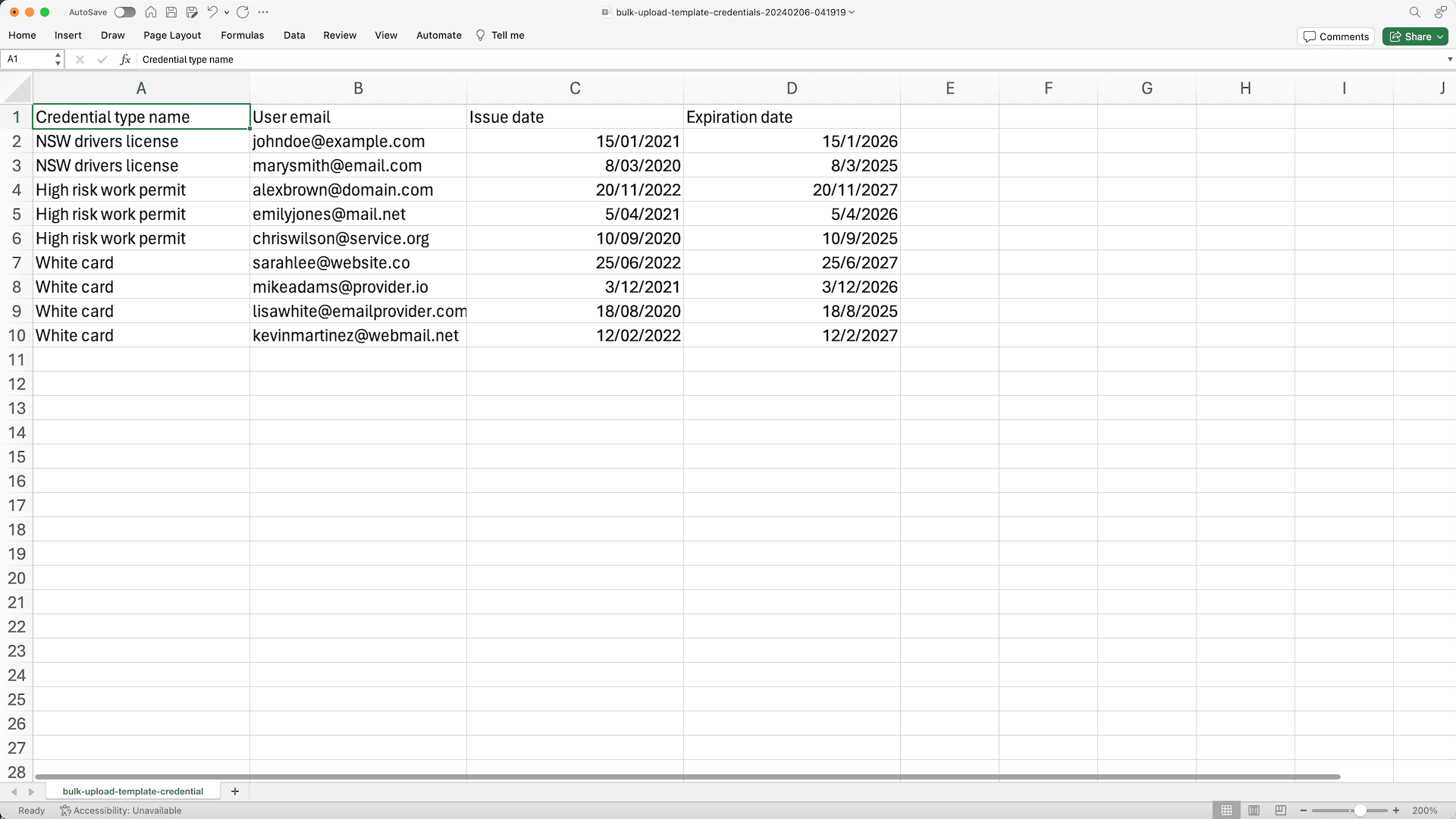
Go back to the web app and upload your CSV.
Review the list of credentials you're uploading. If there are any errors, resolve each error, and then click Re-upload to try again.
Once you're ready, click Next on the upper-right of the page.
Upload the media files for each credential. By default, media attachments are required for each credential. However, if you want to skip and upload the credentials first, you can click Make media optional on the upper-right of the page.
Once you're ready, click Finish and upload.
If approval is required for each credential, credentials will need to be approved individually after they're bulk uploaded by default. However, you can skip the manual approval and approve all the credentials in bulk by clicking Approve in the pop-up window.
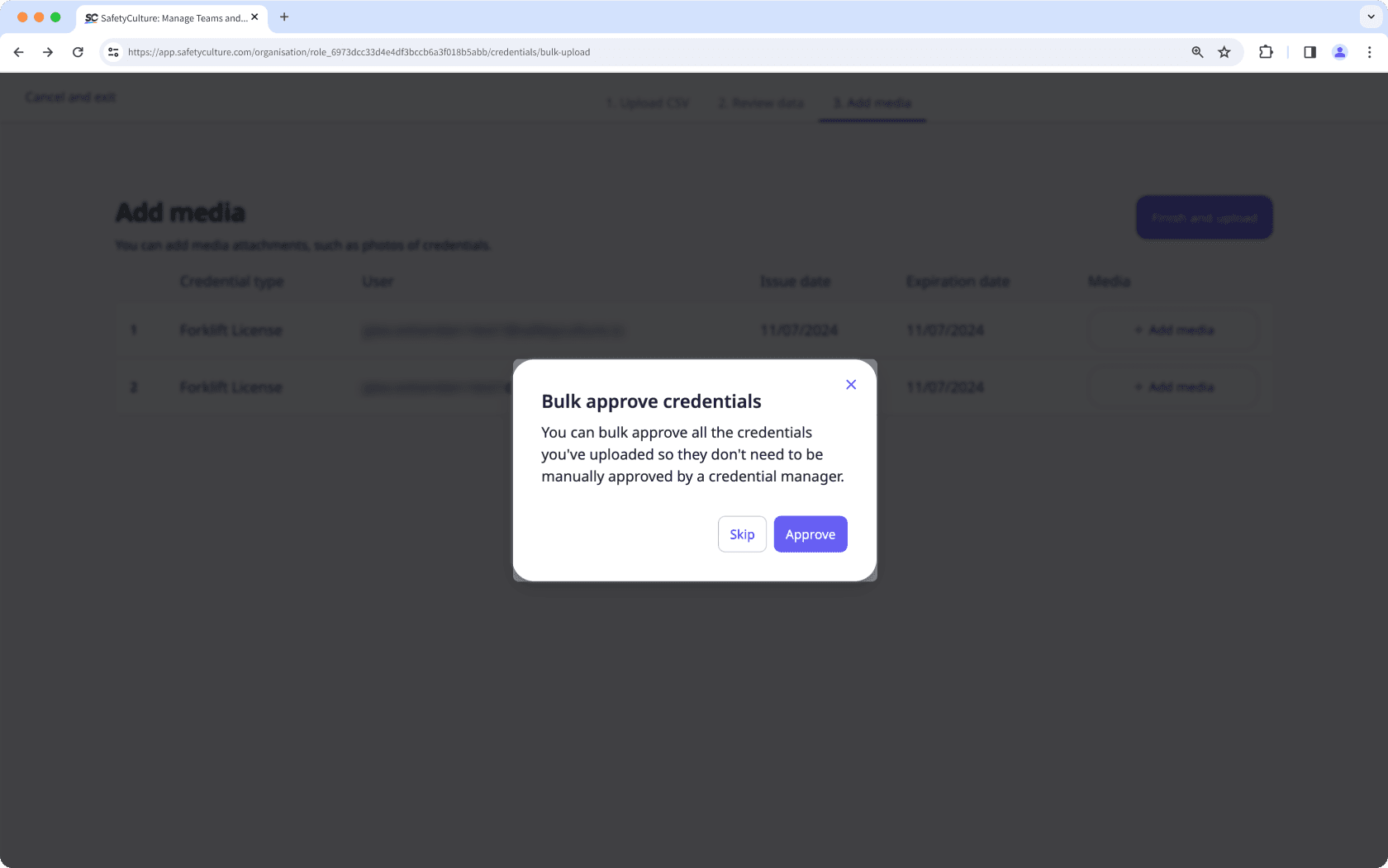
CSV troubleshooting guide
If there's an error in the CSV of credentials you've uploaded, we'll highlight it when you're reviewing the data. You can refer to the following potential errors for resolutions.
Error | Resolution |
|---|---|
Credential type doesn't exist | Please ensure the credential type is created in your organization. If the credential type has been created already, check that the spelling in your CSV file is correct. |
User doesn't exist | Please ensure the user is added to your organization. If the user is added already, check that the user's email in your CSV file is entered correctly, or that the user isn't deactivated. |
Invalid date format | Please ensure the date format matches your profile's date and time format. |
Expiration date is earlier than issue date | Please ensure the expiration date is on a day after the issue date. |
Was this page helpful?
Thank you for letting us know.